Quick Links
Link-building is a significant needle-mover for SEO, which is something we bring up time and time again on this blog.
Yet, for the process to bear fruit, you need to know which tactics are worth your time and which aren’t.
One of the most tried-and-true methods for building powerful backlinks is to publish guest posts on other websites in your industry.
What are those?
A guest post is a piece of content (typically a blog or article, but other content types can apply) that you publish on another website. These are great for SEO because you can include a link back to your website (a backlink) to boost your ranking power on search engines like Google.
Backlinks are credibility votes for the quality of your content, which is why generating links from respected websites is crucial.
As with any SEO technique, there’s a right and a wrong way to approach guest posting.
Stay tuned to learn how to identify the highest quality guest post opportunities to improve your search rankings.
Are Guest Posts Worth the Time and Effort?
Guest posting is one of the oldest link-building techniques, and it still generates impressive results to this day.
It’s the embodiment of ‘if it’s not broken, don’t fix it!’
However, the outreach involved with targeting guest posts is notoriously time-intensive and highly competitive.
Since guest posting is so popular, your competitors will likely target the exact same website for guest posts. This is especially true for niches that only have a handful of websites that accept guest posts (which can be a challenge for more popular industries, too).
Also, there’s the additional time and resource expense involved with producing a fresh piece of content for the guest post.
Given all the work involved, is targeting guest posts really worth it?
The answer is yes, and there are several reasons why.
Exposure to new audiences
Besides generating valuable backlinks, guest posting is also an excellent digital PR tactic that exposes your content to new audiences.
Whenever you land a guest post, a whole new audience gets the chance to experience your brand.
This can lead to referral traffic, increased brand awareness, and even conversions.
The more sites you guest post on, the more this benefit intensifies.
High-quality backlinks
While this is the most obvious benefit associated with link-building, that doesn’t diminish its significance.
If you want to outrank your competitors, then you need more high-quality, relevant (this is huge) backlinks than they have.
Guest posting is so powerful because you’re gaining backlinks from respected, relevant websites in your industry (if you target the right websites, that is, but more on this in a bit).
You’re also creating valuable content for another website’s users, which is great for building trust with a new audience.
Therefore, backlinks from guest posts will:
- Signal to Google that your content is trustworthy and authoritative
- Generate referral traffic from qualified prospects
In the SEO world, it doesn’t get much better than that!
Relationship building
At its heart, guest posting is a form of networking (as is link-building as a whole). This provides the additional benefit of forming close relationships with other websites in your industry.
Guest post outreach will likely have you connecting with bloggers, journalists, and website owners in your field.
If you play your cards right and aim to build long-lasting relationships instead of one-and-done link placements, you’ll see the following benefits:
- Opportunities for future guest posts
- Collaborations on other projects/content types
- Sharing contacts and resources
- Syndicating your top-performing articles on related websites
Boosted credibility
The more guest posts and backlinks you have to other high-quality websites, the more credibility you’ll have – both on search engines and with audiences.
This will inch you closer toward thought leader status, which is an extremely advantageous position to have.
Whenever your audience views you as a thought leader, they’ll turn to your brand first whenever there’s a new development or major news story. As a result, other websites will start to link back to your content as a valuable resource, meaning you’ll generate backlinks without having to do any outreach!
Metrics to Target: Website Authority, Traffic, or Both?
If you want to find success with guest posting, then the websites you publish on need to already have established authority with Google.
Why is that?
It’s because the whole aim of link-building is to pass ‘link juice’ (a fancy term for ranking power) from one site to another.
Low-quality websites that Google doesn’t trust won’t pass any link juice to your website, so they won’t have any effect on your rankings (they can actually negatively affect you if they came from spammy sources, but we’ll cover more on this later),.
The two metrics used to gauge the quality of a website are:
- It’s authority score
- The amount of traffic it generates each month
Ideally, you should guest post on websites that have relatively high authority scores and generate a consistent amount of traffic.
If the site has high authority but doesn’t see many visitors, the backlink may positively affect your SEO – but you likely won’t see any referral traffic from it.
The opposite is also true, as a website with a low authority score but high traffic won’t do much for your SEO, but it could lead to referral traffic.
While the best of both worlds is ideal, targeting strictly authority or traffic can still yield benefits, so don’t be afraid to mix and match.
Calculating website authority scores
How can you tell if a website is authoritative or not?
The quickest and easiest way is to use a third-party metric that calculates a website’s likelihood to rank well on the SERPs.
The two most popular metrics (and the two that we use at The HOTH) are Moz’s Domain Authority Score and Ahrefs’ Domain Rating.
For us to consider a website for a guest post, it MUST have a minimum authority score of 20. Otherwise, it’s not worth the time and effort.
If a site has a DA/DR score of 20, we want it to have a minimum of 150 organic visitors. If the website has a DA/DR score of 40+, then we shoot for a minimum of 500 organic visitors.
These stipulations prevent us from acquiring backlinks that have artificially inflated authority and don’t provide value to users (which are the most likely to land you in trouble with Google).
What’s the difference between Domain Authority and Domain Rating?
You may be asking yourself why we use two third-party metrics to calculate a website’s level of authority. Beyond that, you may wonder why third-party metrics are necessary in the first place.
Doesn’t Google have an official domain authority metric for SEOs to use?
They do, but they keep it a secret. PageRank (Google’s backlink algorithm) used to be public, but Google made it private to prevent marketers from ‘gaming the system.’
They’ve even stated publicly numerous times that they don’t calculate domain authority, but this claim has always raised suspicion from SEOs.
Thanks to the recent leak of Google’s internal search documentation, we now know that Google DOES have a domain authority metric called siteAuthority – but we don’t have access to it.
In the meantime, Moz’s DA and Ahrefs’ DR are the best that we have.
Here’s the difference (and the reason why we use both):
Domain Rating examines the strength of your backlink profile but doesn’t examine any other ranking factors.
Domain Authority, on the other hand, grades the quality of your backlink profile AND other important SEO ranking factors like:
- Age of the domain
- The mobile-friendliness of the site
- Quality of backlinks
- Quality and quantity of unique content
- Social share signals
- Various on-page and technical SEO elements
As you can see, DA takes a more comprehensive look at a website’s SEO performance, whereas DR is strictly about backlink profile strength.
Using both metrics gives us the ability to determine if a website is worth targeting for a guest post. If a site has sky-high DR but a low DA, it’s a sign that they need to work on their on-page SEO. The ideal scenario is a website that has suitable DR and DA scores.
How much does traffic matter?
We’ve already gone over how websites that see a lot of visitors are great for generating referral traffic, but there’s an additional benefit.
A website’s organic traffic is a ranking signal to Google. The more traffic a website has, the more Google views it as relevant and trustworthy.
From thousands of campaigns on our managed service, HOTH X, we found that a mixture of website authority and traffic-based links is an effective link-building strategy.
It’s also a great way to ensure a variety of different referring domains to your money pages.
Giving a website the ‘eye test’
You want to make sure that the websites you guest post on are real websites that serve a purpose for users.
Why is that? Are there fake websites out there accepting guest posts?
The answer is a resounding yes.
There’s no shortage of spammy websites that exist solely to link to other sites in an attempt to artificially boost search rankings.
An example would be a private blog network, which is a series of websites that exist to provide links to one another. The issue is that these are fake websites that often publish:
- Nonsense content
- The same blogs over and over
- Inaccurate or made-up information
The good news is these websites are easy to spot with a quick eye test.
When peeping a website’s layout, look for:
- Internal pages that go beyond the homepage
- Actual articles and resources
- A common theme or topic (many spam sites post random content)
Also, pay attention to the overall design. Is the site easy to navigate, or is it cluttered with confusing sub-menus?
Here is an example of a site that DOES NOT pass the eye test:
Needless to say, you wouldn’t want to target a guest post from a website that looks like that!
9 Red Flags to Look for When Vetting Guest Posting Websites
If you want to become a guest posting guru, you need to know what NOT to look for just as much as what to look for on other websites.
Guest posting on low-quality websites will backfire and have a negative affect on your search rankings, so it’s imperative to proceed with caution.
Here are the top factors to avoid when looking for potential websites to guest post on.
Too many ads
Have you ever visited a website and thought to yourself, “Gee, this site sure could use some more ads.”
Of course you haven’t!
Nobody likes sites crammed with ads since they negatively affect the user experience. An excessive amount of ads is also a telltale sign of a spam site that you should stay clear away from, so beware!
Here is an example:
Updated content
How often does the domain post content?
If they haven’t posted in over a year, you’re better off targeting another website. Dead domains (sites that haven’t been updated in years) aren’t good for SEO because Google likely hasn’t crawled them in quite some time.
Google gives crawling priority to websites that are A) popular and B) post fresh content all the time.
In fact, if you pick up a backlink from a super old domain, chances are you’ll have to wait an eon (possibly up to a year) for it to impact your SEO.
Irrelevant site categories
Relevance is one of the most crucial factors for a backlink to positively affect your rankings. Google will either ignore or flag irrelevant links as spam.
This means you need to target websites that are relevant to your niche, either in topic or contextually.
Here’s the difference:
- Topical relevance means the website covers the same topics as you do. It could be a blog, forum, e-commerce store, or other type of site.
- Contextual relevance refers to websites that aren’t normally relevant to your website but are given the context. An example would be a news website publishing a backlink to a project management software website. Ordinarily, the two aren’t relevant. Yet, if the backlink comes from an article entitled “New Project Management Software Taking Over Offices Nationwide,” then the link makes sense in context.
The anchor text you use for your backlinks also matters. Here’s an in-depth guide on achieving proper anchor text ratios.
Do-follow vs No-follow
Links with dofollow tags will impact your SEO much more than nofollow tags.
A dofollow tag is a line of HTML code that signals to Google that the backlink will count toward your search rankings.
A nofollow tag does the opposite and signals to Google that the backlink SHOULD NOT affect your search rankings (although there’s evidence to show that nofollow links still retain some of their ranking power).
There are certain situations where Google requires site owners to mark backlinks with nofollow tags. An example is all press release backlinks.
How do you find out if a website provides dofollow links?
Check out a few of the articles on the website. Use Moz‘s toolbar extension or any other extension/SEO Tools to check if there is a do-follow link within the article.
You can also use Ahrefs Site Explorer. Here’s how.
First, enter the URL of the domain you want to check.
Next, scroll down and click linked domains:
From here, you can select the type of link and see the total number of each type coming from this domain.
This is a great way to ensure your link will be dofollow.
Additionally, you should confirm that your link will be dofollow by confirming it with the webmaster during your initial outreach email.
Sponsored Tags/Sponsored Messages
Some websites have guest posts but with sponsored messages or sponsored tags on the posts.
In 2019, Google introduced the rel=”sponsored” attribute, which identifies sponsored or promotional links. Think of it as a type of nofollow link.
It’s basically telling Google that you’ve paid for the link and that it is promotional content.
While this isn’t inherently a bad thing, sponsored backlinks don’t carry the same ranking power as genuine guest posts do.
These sites will often mark all of their sponsored content with a “Sponsored” tag, which makes it easy to find:
Even if they don’t use the sponsored link attribute or a sponsored tag, they might have sponsored messages before or after the content on their blog.
PBNs
We’ve already gone over the idea behind private blog networks. An SEO (or group of SEOs) creates a group of dummy sites that only exist to link to one another.
It qualifies as a link scheme under Google’s official search guidelines, so you shouldn’t use them.
When buying backlinks, you need to carefully vet where they get their links from.
There are plenty of link vendors out there claiming to sell premium backlinks when they’re actually all from PBNs.
How to spot PBNs online
Here are the telltale signs of PBNs to look out for.
Blogs covering a wide variety of topics with no dedicated focus:
A Write for Us page (these types of websites accept guest posts from pretty much everyone):
While it may seem like a godsend when looking for websites that accept guest posts, that’s exactly what they’re capitalizing on. It’s worth taking the time to find actual websites that accept posts instead of going with a quick and easy fix.
How to Find Guest Post Opportunities
Now that you know what not to look for, it’s time to learn how to find genuine guest posting opportunities online.
Here’s a look at some of our favorite techniques for pinning down websites for guest blogging.
Google Search operators
Search operators are special strings of characters that let you further refine your searches, and they’re perfect for finding guest post opportunities.
The most basic type of search operator involves wrapping keywords in quotations. This tells Google that you only want to see search results that contain those words.
Going with this formula, here’s how you can target guest posts:
- Basic search: “your industry/niche” + “write for us” (e.g., “marketing” + “write for us”)
- Find websites accepting submissions: “your industry/niche” + “submit a guest post”
- Target specific websites: “website name” + “guest post guidelines”
Social Media
Social media is a great tool for finding guest opportunities.
After all, no matter your target audience, they’re bound to have a presence on social media somewhere. For instance, TikTok is popular with a younger crowd, while older generations prefer Facebook. Professional audiences hang out on platforms like LinkedIn, especially B2B companies.
Basically, you should use it as a networking tool.
Look up groups and forums related to your industry, and start entering your brand into the discussion. Also, visit websites mentioned to or linked by top influencers in your field.
Content Analysis Tools
What’s trending in your niche? A great way to find out is to use a tool like Buzzsumo. It will connect you with hundreds of journalists in your field, and you’ll get the chance to identify blogs that share similar topics as yours.
Google Trends is another tool you can use to stay current with your audience. Simply enter a few keywords related to your industry, and you’ll get to see what’s currently trending.
Leveraging Competitor Backlinks
Last but not least, you can let your competitors guide your backlink strategy.
Check out the top-ranking websites for important industry keywords. From there, enter their URL into our free backlink checker tool to peep their backlinks.
Make a note of any relevant business directories, link insertions, and guest blogs they’ve written.
Since you share the same niche, any websites they target are also fair game for you!
You can also use an advanced search operator on Google to find competitor’s backlinks. Here’s how:
link:domain.com -domain.com “guest post” (replace domain.com with your competitor’s domain)
This reveals websites where your competitor has contributed guest posts.
Example: link:backlinko.com -backlinko.com “guest post”
Do lots of outreach (and follow-up)
If you found a relevant website that you want a link from, it’s not guaranteed that they will want your post or that they will even RESPOND.
We make sure to follow up ASAP with webmasters we work with if we haven’t heard back from them for a few days.
It’s normal for webmasters’ inboxes to fill up every single day, which is why follow-up emails are a must (without overdoing it).
Also, personalize each outreach email with the webmaster’s name, and throw in some details about how you’re a fan of their work (without sucking up too much).
Ultimately, your goal should be to form a positive, long-lasting relationship with the website instead of targeting a single link placement.
Check out our complete guide for more information on how to do quality manual outreach.
Extra Link Outreach Tips
We’re not done yet!
Here are some extra tips to employ whenever you find a suitable website to write a guest post for:
Make sure YOUR content is quality
Quality content is the name of the game for any SEO strategy. Without it, all your outreach efforts are for naught.
Also, remember that larger websites receive dozens (sometimes hundreds) of backlink requests per week.
This means your content and pitch must stand out from the crowd.
In particular, do your best to produce helpful content that answers users’ questions, educates them, and entertains them.
Contact others who have done a guest blog
Are you a total guest-posting newbie?
If so, you should connect with bloggers who’ve previously written guest posts for the website you’re targeting for a backlink. Politely ask about their experience, the website’s editorial process, and responsiveness.
This gives you insider knowledge about the publication’s expectations, which will help you craft a picture-perfect pitch.
Scrutinize guest post guidelines
As stated before, PBNs accept guest posts from anybody and everybody online, which is to their detriment.
To find true success, you should post to websites that have standards. In particular, look for quality guidelines, style guides, and direction for tone of voice. These are all signs of quality blogs that are worth pursuing backlinks from.
Do lots of outreach (and follow up)
If you found a relevant website that you want a link from, it’s not guaranteed that they will want your post or that they will even RESPOND.
We make sure to follow up ASAP with webmasters we work with if we haven’t heard back from them for a few days.
Check out our complete guide and for more information on how to do quality manual outreach.
Conclusion: Identifying Quality Websites for Guest Posts
That wraps up our breakdown of how to vet websites for guest posts.
We follow these guidelines to the letter every time we consider a website for a guest post, and they haven’t failed us yet.
It takes a lot of effort to not only vet link opportunities, but also to pursue them. In fact, it proves to be too much to handle for most businesses.
At The HOTH, we can take the link outreach process off your hands to simplify your SEO success, so don’t wait to book a call today.



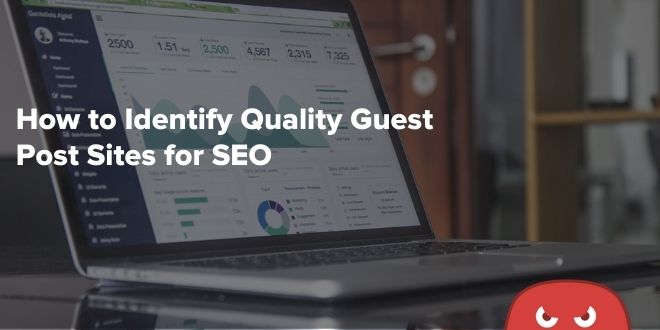




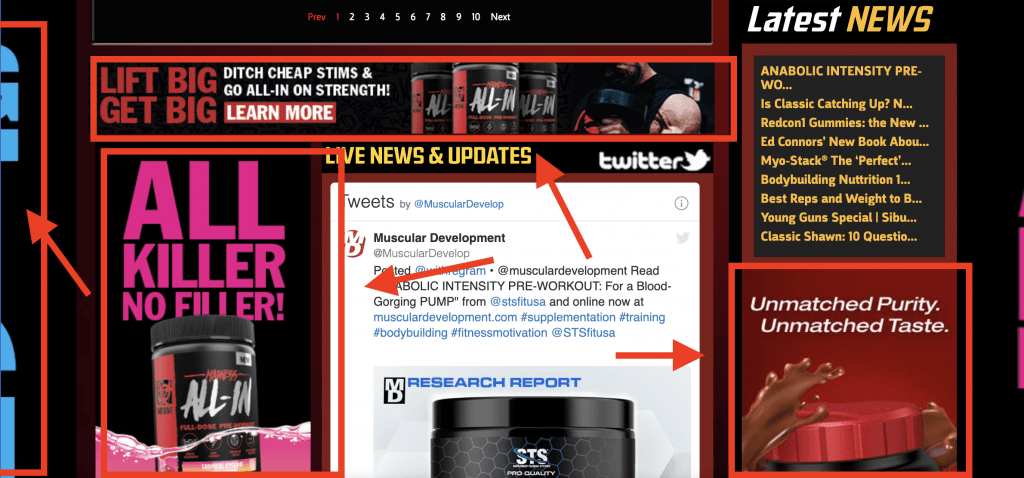
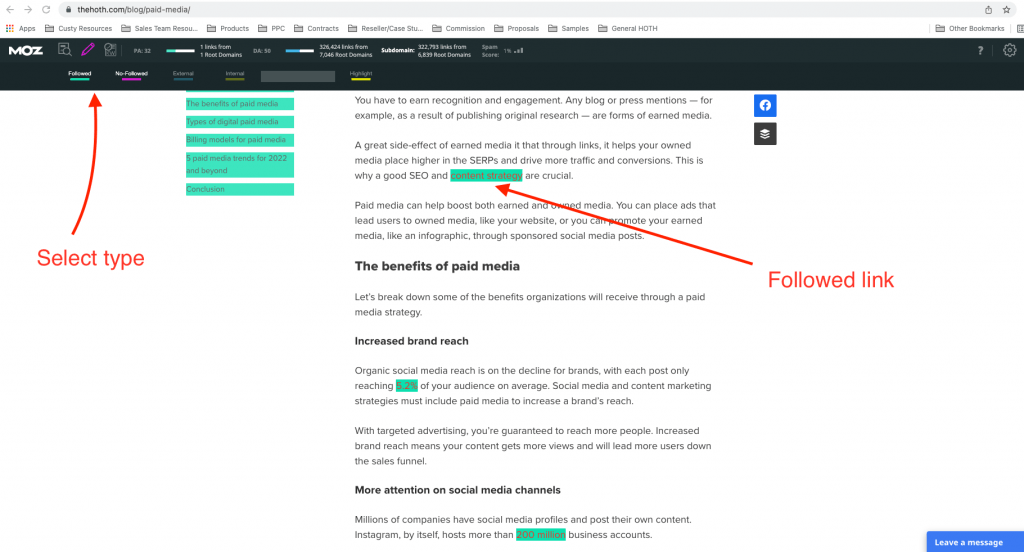

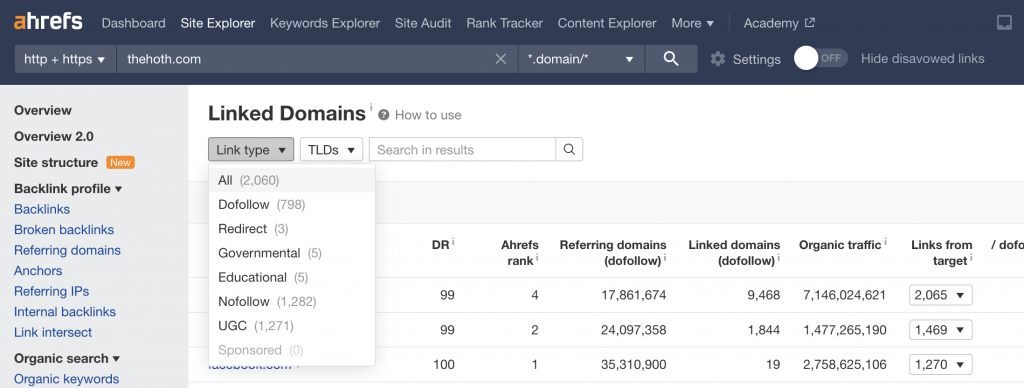
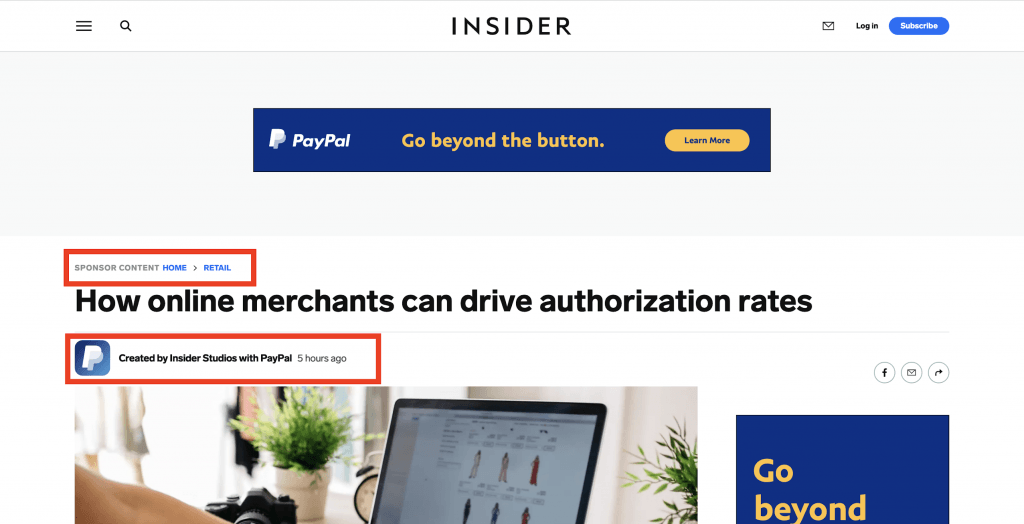





Very good and creative method for building backlinks to your site and also traffic. It’s very good! Thanks a lot for this post!
Very informative piece of content not only for SEO guy but also for SEO Agency
Great content. Thanks for sharing
Great, thank you!
Great content. Really useful for those who are persuing for seo.Thanks for sharing
Great content! Thanks a lot. I will focus my SEO strategies to the bigger audience via guest posts again and it is not that easy. Thankful for every tip.
Thanks for the information Jake. I would like to contribute with advice for beginner SEOs: You can also try the ‘KWFinder’ as a quick and easy tool to analyze important backlink metrics. It is recommended to make a quick and reliable calculation of the link. It really works very simply 🙂